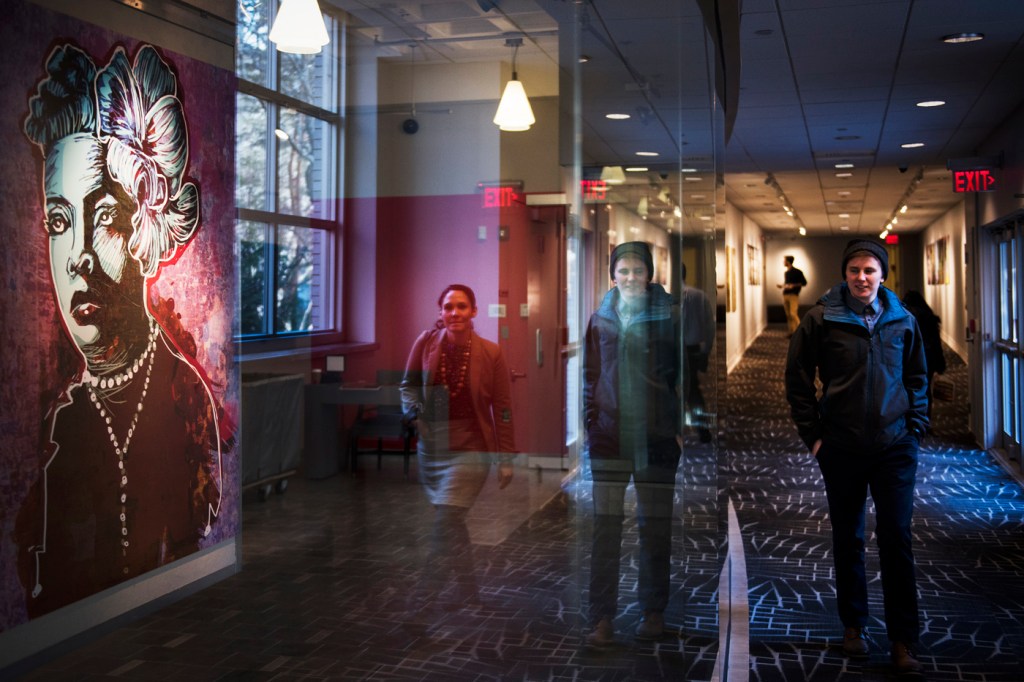Artist analyzes, disrupts racial stereotypes in comics

John Jennings does not see a need to validate the legitimacy of comic books and graphic novels. Just like reading and writing, he sees comics as a medium for literacy.
“Reading and writing are two different modes of literacy and so are comics,” said Jennings, an illustrator, graphic novelist, and associate professor at the State University of New York at Buffalo. “When we are absorbing information we are looking at images and texts constantly, and comics are a great way to prepare for a media-rich environment.”
It’s through exhibits like “Visible Noize,” which is on display at Northeastern’s Gallery 360 until March 13, that Jennings is working to change the stigma around comics while also disrupting racial stereotypes within the medium.

John Jennings Contributed photo
From the beginning
Jennings was turned on to comics at an early age thanks in part to his mother, who bought him mythology books and the Spider Man comics. And the Masters of American Comics show in 2005 later served as the catalyst for his examination of how African Americans are represented in comics.
“All of the featured artists in the show were white men,” Jennings said. “Don’t get me wrong, I loved all of them. We are talking about the dopest artists in the medium, but there were no women or really any people of color. And not only was this not a diverse show in terms of who was in it, but also in the type of work displayed.”

Photo by Matthew Modoono/Northeastern University
Since then, Jennings, many times working with collaborators, has produced a number of works that analyze and alter the depiction of African Americans in comics and popular culture.
In conjunction with the Gallery 360 exhibit, there is an all-day symposium on Thursday focusing on the politics of race and identity representation in comics. The symposium—co-sponsored by the Office of Institutional Diversity and Inclusion and the Northeastern Center for the Arts—will be held in the Curry Student Center Ballroom from 9:30 a.m. to 3 p.m.
Anybody can make a comic. It may not be the dopest comic you are going to make, but anyone can take a pen, divide up a page, create a story, go down to Kinkos, and print it out, and I love that.”
— John Jennings
Roll of the dice
In some instances, Jennings said he’ll start a comic by rolling dice. Whatever number comes up is how many panels the comic will be. “The panel structure is by chance,” Jennings explained. “It’s up to the universe. Obviously nothing is set in stone, but it gives you a starting point and is a creative way to hack into your process.”
That’s how he started Kid Code, a collaboration with Stacey Robinson, an artist and illustrator. This hip-hop themed graphic novel follows a time-travelling protagonist as he and his team work to assemble “The Everlasting Cosmic Mixtape” and set the universe back on course. Art from Kid Code is included in the Gallery 360 exhibit.

Photo by Matthew Modoono/Northeastern University
“Reaction has been positive,” Jennings said. “It is very esoteric, it is a lot of information, and it is a crazy narrative. A lot of people have said they’ve had to read it a couple times in order to understand everything, and you can get something different from it with each read.”
Inspiration
Jennings said he is influenced by everything, but he particularly likes reading independent comics because of the unique stories and images that you wouldn’t see at the mainstream level.
“There is a great book called Revenger that I stumbled across about this black woman whose entire family is killed, and she becomes a one-woman A Team and it is very bloody,” Jennings explained. “It is over the top…and it is great. But you would never see that in mainstream comics.”
One of the reasons he loves the comic medium is because anyone can write a comic. And with advancements in technology, there is a saturation of stories and a sharing of skills.
“Anybody can make a comic,” Jennings noted. “It may not be the dopest comic you are going to make, but anyone can take a pen, divide up a page, create a story, go down to Kinkos, and print it out, and I love that.”





